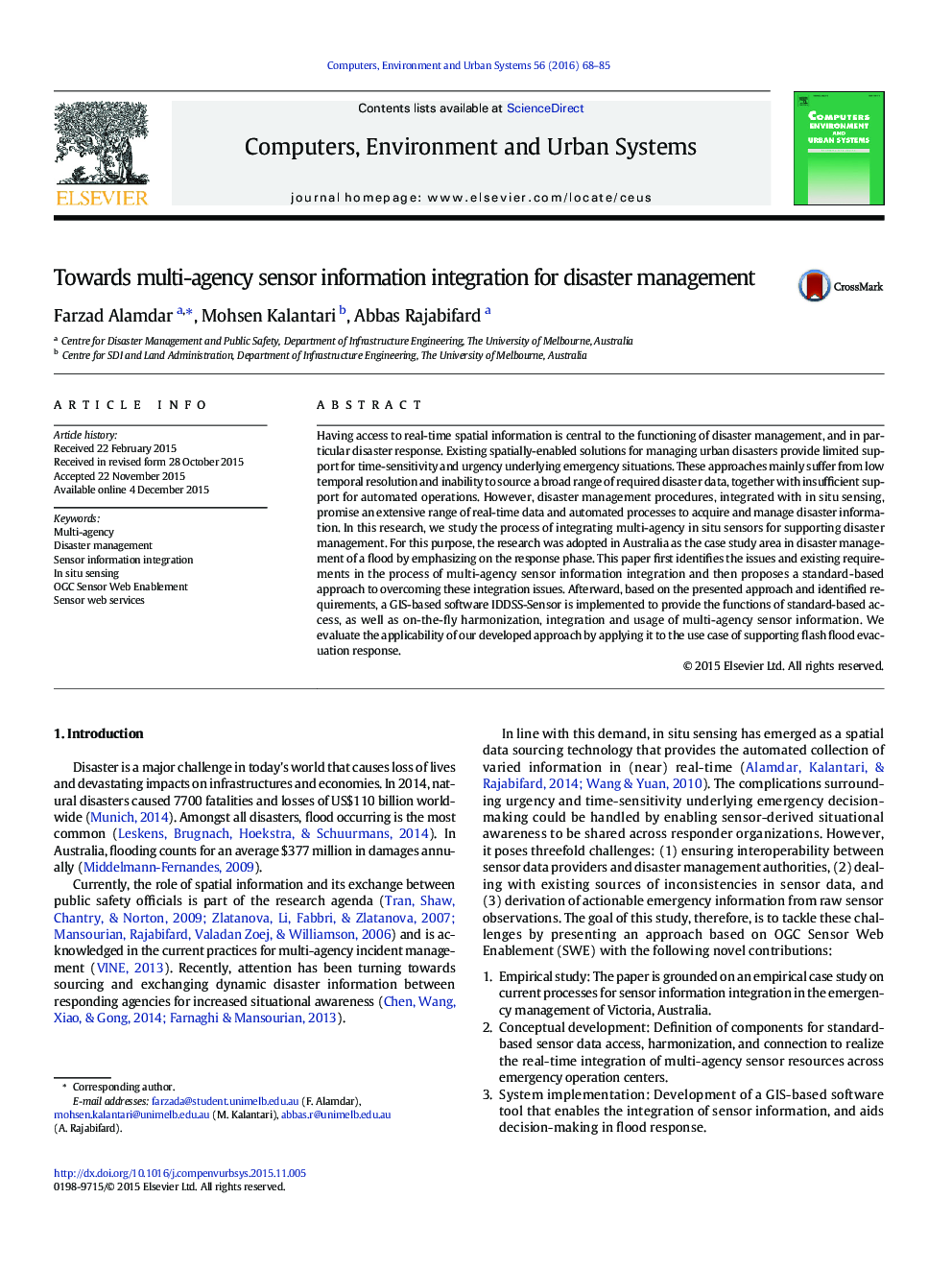| Article ID | Journal | Published Year | Pages | File Type |
|---|---|---|---|---|
| 506285 | Computers, Environment and Urban Systems | 2016 | 18 Pages |
•Studied the process of incorporating multi-agency sensor data for disaster management.•Grounded on an empirical case study around sensor information transaction across emergency management sector.•Developed components for standard-based access, harmonization, and connection of multi-agency sensor resources.•Employed OGC Sensor Web Enablement standards for integrating multi-vendor sensor data sources.•Implemented a GIS-based tool, IDDSS-Sensor that enables the integration of sensor data in real-time, and aids flood response.
Having access to real-time spatial information is central to the functioning of disaster management, and in particular disaster response. Existing spatially-enabled solutions for managing urban disasters provide limited support for time-sensitivity and urgency underlying emergency situations. These approaches mainly suffer from low temporal resolution and inability to source a broad range of required disaster data, together with insufficient support for automated operations. However, disaster management procedures, integrated with in situ sensing, promise an extensive range of real-time data and automated processes to acquire and manage disaster information. In this research, we study the process of integrating multi-agency in situ sensors for supporting disaster management. For this purpose, the research was adopted in Australia as the case study area in disaster management of a flood by emphasizing on the response phase. This paper first identifies the issues and existing requirements in the process of multi-agency sensor information integration and then proposes a standard-based approach to overcoming these integration issues. Afterward, based on the presented approach and identified requirements, a GIS-based software IDDSS-Sensor is implemented to provide the functions of standard-based access, as well as on-the-fly harmonization, integration and usage of multi-agency sensor information. We evaluate the applicability of our developed approach by applying it to the use case of supporting flash flood evacuation response.
